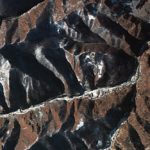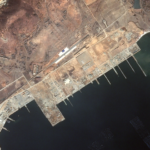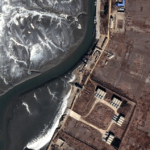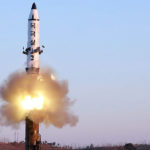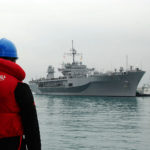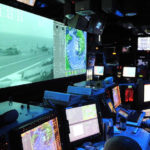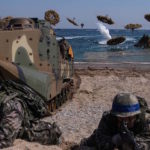February 15, 2019, by Joseph S. Bermudez Jr., Victor Cha and Lisa Collins—
Located 250 kilometers north of the DMZ, Sangnam-ni missile operating base is an operational missile base that houses a battalion- or regiment-sized unit equipped with Hwasong-10 (Musudan) intermediate-range ballistic missiles (IRBM). Multiple flight failures of the Musudan missile in 2016 could have also led the KPA Strategic Force to abandon the system and replace it with the more successful Hwasong-12 IRBM.
March 5, 2018, by Joseph S. Bermudez Jr. and Beyond Parallel—
North Korean special forces are a critical component of the Korean People's Army. Within the Korean People's Army Naval Force, unique sniper brigades exist to carry out specialized missions focused on sabotage and subversion of command and control facilities, reconnaissance, infiltration, and amphibious landings and assaults. As part of a four-part series, this final report provides more details about the development, organization, deployment, and training of North Korean hovercraft units which form part of the KPN sniper brigades.
February 15, 2018, by Joseph S. Bermudez Jr. and Beyond Parallel—
Key among North Korea’s military capabilities are its special operations forces. Embedded within North Korea's special operations forces are two unique navy “sniper” brigades that are subordinate to the Korean People’s Navy. Hovercraft units that operate as part of these brigades have been trained to carry out a more specialized task—amphibious assault landings and infiltration missions.
February 5, 2018, by Joseph S. Bermudez Jr. and Beyond Parallel—
Satellite imagery analysis shows that North Korea continues to develop its conventional military forces in targeted areas. Construction on a new hovercraft base near Yonbong-ni could indicate a significant escalation of the navy sniper brigade threat to the ROK islands in the West Sea and ports along the coast.
January 25, 2018, by Joseph S. Bermudez Jr. and Beyond Parallel—
North Korea has one of the largest special operations forces (SOF) in the world with specially trained, elite soldiers numbering close to 200,000. Among these unique special operations forces today are two navy “sniper” brigades. North Korean hovercraft units—a key element in supporting navy sniper brigades' offensive operations—have evolved and become more threatening over time as a result of restructuring, modernization and construction of new bases closer to the Northern Limit Line.
February 22, 2017, by Scott LaFoy—
With its latest missile test, DPRK is sending the message that it is moving towards a domestically-produced survivable second strike capability, something that would contribute towards a credible North Korean deterrent against its neighbors and opponents.
August 18, 2016—
A new study by Beyond Parallel shows that annual US-ROK military exercises do not provoke North Korea... A Beyond Parallel study showsthat annual U.S.-South Korea military exercises – such as Ulchi Freedom Guardian which commence next week – do not provoke North Korea. The study’s findings demonstrate that these summer/fall exercises, like…
August 7, 2016—
CSIS Beyond Parallel datasets offer…
June 30, 2016, by Victor Cha—
Small-scale kinetic military conflicts and provocations that escalate quickly into a larger conflict could draw countries into a major war. The more we understand the relationship between North Korean provocations and U.S.-ROK military exercises, the more accurately we can determine the redlines for military action and regional conflict escalation.
May 27, 2016—
To critically test this proposition, Beyond Parallel gathered data on the relationship between the United States-Republic of Korea (ROK) military exercises and North Korean provocations. The scope of our qualitative study was the past 12 years of annual U.S.-ROK spring military exercises (2005–2016).
